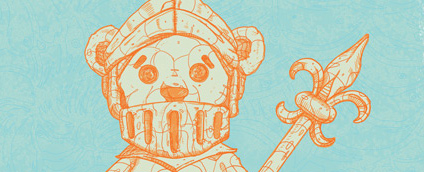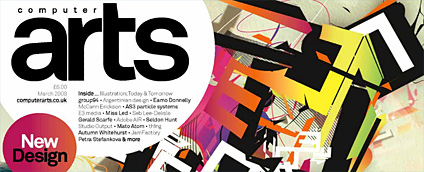A great designer is one who can create great designs long after the latest trends have passed. When in doubt always go back to basics & the fundamentals you learned when starting out. Here are some steps I personally take that have helped me become a better designer. My hope is that this will remind you of the little things we sometimes take for granted. Please feel free to add to the list if you have tips – interacting with the community & sharing the knowledge is what it’s all about.
1 . Trends
Keeping up to date on the latest trends is important – however “trends” does not mean “copy”. Get inspiration and create your own style. See this highly effective post of 2008 Design Trends.
2. Learn & Develop
Great designers are always learning and stay fresh on the latest styles. A great resource for finding specific collections for interface design on the web is PatternTap.
3. Think on Paper
Sketching should be your best friend, especially if your in the beginning stages of a wireframe or even simple list ideas. Getting away from the computer and onto paper gives you less distraction. Check out The Importance of Sketching.

4. White Space
Sometimes less is more. Don’t clutter your designs – readability is key to the success of a website. Minimal or Simplistic does not mean boring. For some great examples check out MinimalSites.
5. Technology / Applications
Keep up on the latest programs in your field (But Don’t Upgrade to CS4!) and if your looking for online training I suggest checking out Lynda.
6. Read
These are some great Magazines I recommend flipping through: .Net, Communication Arts, Computer Arts Magazine

If your having an inspiration block check out: Feeling the need for some Inspiration.
7. Know your Audience
Revisit the original creative brief, just because your designing something you like – doesn’t mean the client will like it. You have to look at the age group and demographic target your trying to reach, all these things are very important and you should take extra steps to not lose site of this.
8. Ask others Opinions
Recently I was redesigning a logo and simply “tweeted” on Twitter. I received over 45 replies as well as in depth detailed comments on my Flickr page where I posted the comps. You don’t have to show everyone either depending on the content, ask a colleague you trust. They may point out problems or errors that didn’t cross your mind.
9. Build a “Toolbox”
I keep a harddrive full of assets, code, old work & forms that I made need to grab someday. I organize it by the type of work (ex. CSS, Flash, Vectors, Forms). When your searching for something while working on a project it’s a lot easier when your organized. Trust me it will save you time!
10. Competition
Take a look at what other web designers are doing. Being aware of what’s happening in your industry is a must. There is not a shortage of gallery sites around but these are the ones I visit most: (http://screenfluent.com/) (http://www.lightondark.com/sites/) (http://bestwebgallery.com/) (http://www.faveup.com/) (http://www.webcreme.com/) (http://www.designbygrid.com/)
Source http://webdesignledger.com
Comments
Post a Comment